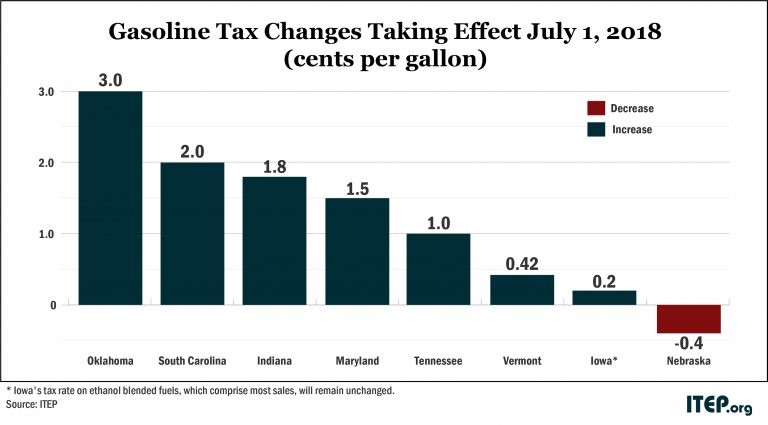As the United States looks to expand and improve infrastructure across the country, state governments often struggle in their efforts to cover rising material and machinery costs with fixed-rate gasoline taxes. Fuel taxes alone can’t cover rising costs associated with infrastructure and construction projects, but they can certainly offset revenue losses and add new funds.
In response to these challenges, seven U.S. states raised their gas taxes this summer, including Oklahoma, South Carolina, Indiana, Maryland, Tennessee, Vermont and Iowa.

According to the Institute on Taxation and Economic Policy (ITEP), each state’s reasoning varies, but most focus on injecting funds into infrastructure maintenance and construction projects.
- Oklahoma’s additional fuel revenue from the tax frees up general fund money previously used to cover transportation costs, which will now be used to boost teacher salaries.
- South Carolina’s 2 cents per gallon increase is the second of a six-part increase legislative measure passed in 2017.
- Indiana raised gas and diesel taxes, part of an annual update to match inflation and the personal income growth in the state.
- Maryland implemented a 2013 formula that ties the tax rate to increases in inflation rate and motor fuel costs.
- Tennessee’s 1 cent increase is part of a 6-cent gas tax increase and 10-cent diesel tax increased enacted in 2017.
- Vermont’s gas tax increase is directly linked to the price of gas. The diesel tax will remain unchanged.
- Iowa’s 0.2 cent increase is for fuels that are not blended with ethanol.
In some cases, state governments have gone years, or even decades, since their last gas tax rate increase. Alaska, for example, hasn’t raised their rate since the 1970s. Oklahoma’s 3 cent increase represents their first jump in over 31 years, making this summer’s change historic for the state, which also announced an 8-year, $80 million construction plan to widen I-44 in Tulsa.
In the Teletrac Navman recent 2018 Telematics Benchmark Report, 14% of respondents cited the fuel tax as a top 2018 compliance concern and 36% say fuel costs are the second largest expense behind payroll. As trucking and construction companies look to cut fuel spend with improved efficiency, 43% of telematics users have seen reduced fuel costs.
Learn how Teletrac Navman can help your fleet achieve IFTA compliance.

